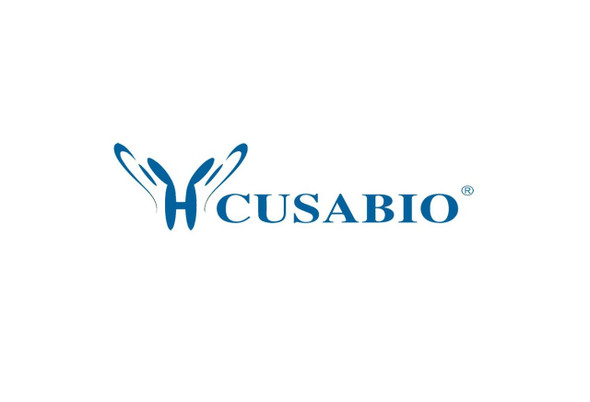Cusabio Human Recombinants
Recombinant Human E3 ubiquitin-protein ligase TRIM21 (TRIM21) | CSB-YP024457HU
- SKU:
- CSB-YP024457HU
- Availability:
- 3 - 7 Working Days
Description
Recombinant Human E3 ubiquitin-protein ligase TRIM21 (TRIM21) | CSB-YP024457HU | Cusabio
Alternative Name(s): 52KDA Ro protein52KDA ribonucleoprotein autoantigen Ro/SS-ARING finger protein 81Ro(SS-A)Sjoegren syndrome type A antigen ;SS-ATripartite motif-containing protein 21
Gene Names: TRIM21
Research Areas: Epigenetics and Nuclear Signaling
Organism: Homo sapiens (Human)
AA Sequence: MASAARLTMMWEEVTCPICLDPFVEPVSIECGHSFCQECISQVGKGGGSVCPVCRQRFLLKNLRPNRQLANMVNNLKEISQEAREGTQGERCAVHGERLHLFCEKDGKALCWVCAQSRKHRDHAMVPLEEAAQEYQEKLQVALGELRRKQELAEKLEVEIAIKRADWKKTVETQKSRIHAEFVQQKNFLVEEEQRQLQELEKDEREQLRILGEKEAKLAQQSQALQELISELDRRCHSSALELLQEVIIVLERSESWNLKDLDITSPELRSVCHVPGLKKMLRTCAVHITLDPDTANPWLILSEDRRQVRLGDTQQSIPGNEERFDSYPMVLGAQHFHSGKHYWEVDVTGKEAWDLGVCRDSVRRKGHFLLSSKSGFWTIWLWNKQKYEAGTYPQTPLHLQVPPCQVGIFLDYEAGMVSFYNITDHGSLIYSFSECAFTGPLRPFFSPGFNDGGKNTAPLTLCPLNIGSQGSTDY
Source: Yeast
Tag Info: N-terminal 6xHis-tagged
Expression Region: 1-475aa
Sequence Info: Full Length
MW: 56.2 kDa
Purity: Greater than 90% as determined by SDS-PAGE.
Relevance: E3 ubiquitin-protein ligase whose activity is dependent on E2 enzymes, UBE2D1, UBE2D2, UBE2E1 and UBE2E2. Forms a ubiquitin ligase complex in cooperation with the E2 UBE2D2 that is used not only for the ubiquitination of USP4 and IKBKB but also for its self-ubiquitination. Component of cullin-RING-based SCF (SKP1-CUL1-F-box protein) E3 ubiquitin-protein ligase complexes such as SCF(SKP2)-like complexes. A TRIM21-containing SCF(SKP2)-like complex is shown to mediate ubiquitination of CDKN1B ('Thr-187' phosphorylated-form), thereby promoting its degradation by the proteasome. Monoubiquitinates IKBKB that will negatively regulates Tax-induced NF-kappa-B signaling. Negatively regulates IFN-beta production post-pathogen recognition by polyubiquitin-mediated degradation of IRF3. Mediates the ubiquitin-mediated proteasomal degradation of IgG1 heavy chain, which is linked to the VCP-mediated ER-associated degradation (ERAD) pathway. Promotes IRF8 ubiquitination, which enhanced the ability of IRF8 to stimulate cytokine genes transcription in macrophages. Plays a role in the regulation of the cell cycle progression. Enhances the decapping activity of DCP2. Exists as a ribonucleoprotein particle present in all mammalian cells studied and composed of a single polypeptide and one of four small RNA molecules. At least two isoforms are present in nucleated and red blood cells, and tissue specific differences in RO/SSA proteins have been identified. The common feature of these proteins is their ability to bind HY RNAs.2
Reference: Protein heterogeneity in the human Ro/SSA ribonucleoproteins. The 52- and 60-kD Ro/SSA autoantigens are encoded by separate genes.Itoh K., Itoh Y., Frank M.B.J. Clin. Invest. 87:177-186(1991)
Storage: The shelf life is related to many factors, storage state, buffer ingredients, storage temperature and the stability of the protein itself. Generally, the shelf life of liquid form is 6 months at -20?/-80?. The shelf life of lyophilized form is 12 months at -20?/-80?.
Notes: Repeated freezing and thawing is not recommended. Store working aliquots at 4? for up to one week.
Function: E3 ubiquitin-protein ligase whose activity is dependent on E2 enzymes, UBE2D1, UBE2D2, UBE2E1 and UBE2E2. Forms a ubiquitin ligase complex in cooperation with the E2 UBE2D2 that is used not only for the ubiquitination of USP4 and IKBKB but also for its self-ubiquitination. Component of cullin-RING-based SCF (SKP1-CUL1-F-box protein) E3 ubiquitin-protein ligase complexes such as SCF(SKP2)-like complexes. A TRIM21-containing SCF(SKP2)-like complex is shown to mediate ubiquitination of CDKN1B ('Thr-187' phosphorylated-form), thereby promoting its degradation by the proteasome. Monoubiquitinates IKBKB that will negatively regulates Tax-induced NF-kappa-B signaling. Negatively regulates IFN-beta production post-pathogen recognition by polyubiquitin-mediated degradation of IRF3. Mediates the ubiquitin-mediated proteasomal degradation of IgG1 heavy chain, which is linked to the VCP-mediated ER-associated degradation (ERAD) pathway. Promotes IRF8 ubiquitination, which enhanced the ability of IRF8 to stimulate cytokine genes transcription in macrophages. Plays a role in the regulation of the cell cycle progression. Enhances the decapping activity of DCP2. Exists as a ribonucleoprotein particle present in all mammalian cells studied and composed of a single polypeptide and one of four small RNA molecules. At least two isoforms are present in nucleated and red blood cells, and tissue specific differences in RO/SSA proteins have been identified. The common feature of these proteins is their ability to bind HY RNAs.2. Involved in the regulation of innate immunity and the inflammatory response in response to IFNG/IFN-gamma. Organizes autophagic machinery by serving as a platform for the assembly of ULK1, Beclin 1/BECN1 and ATG8 family members and recognizes specific autophagy targets, thus coordinating target recognition with assembly of the autophagic apparatus and initiation of autophagy. Acts as an autophagy receptor for the degradation of IRF3, hence attenuating type I interferon (IFN)-dependent immune responses
Involvement in disease:
Subcellular Location: Cytoplasm, Cytoplasmic vesicle, autophagosome, Nucleus, Cytoplasm, P-body
Protein Families: TRIM/RBCC family
Tissue Specificity: Isoform 1 and isoform 2 are expressed in fetal and adult heart and fetal lung.
Paythway:
Form: Liquid or Lyophilized powder
Buffer: If the delivery form is liquid, the default storage buffer is Tris/PBS-based buffer, 5%-50% glycerol. If the delivery form is lyophilized powder, the buffer before lyophilization is Tris/PBS-based buffer, 6% Trehalose, pH 8.0.
Reconstitution: We recommend that this vial be briefly centrifuged prior to opening to bring the contents to the bottom. Please reconstitute protein in deionized sterile water to a concentration of 0.1-1.0 mg/mL.We recommend to add 5-50% of glycerol (final concentration) and aliquot for long-term storage at -20?/-80?. Our default final concentration of glycerol is 50%. Customers could use it as reference.
Uniprot ID: P19474
HGNC Database Link: HGNC
UniGene Database Link: UniGene
KEGG Database Link: KEGG
STRING Database Link: STRING
OMIM Database Link: OMIM









